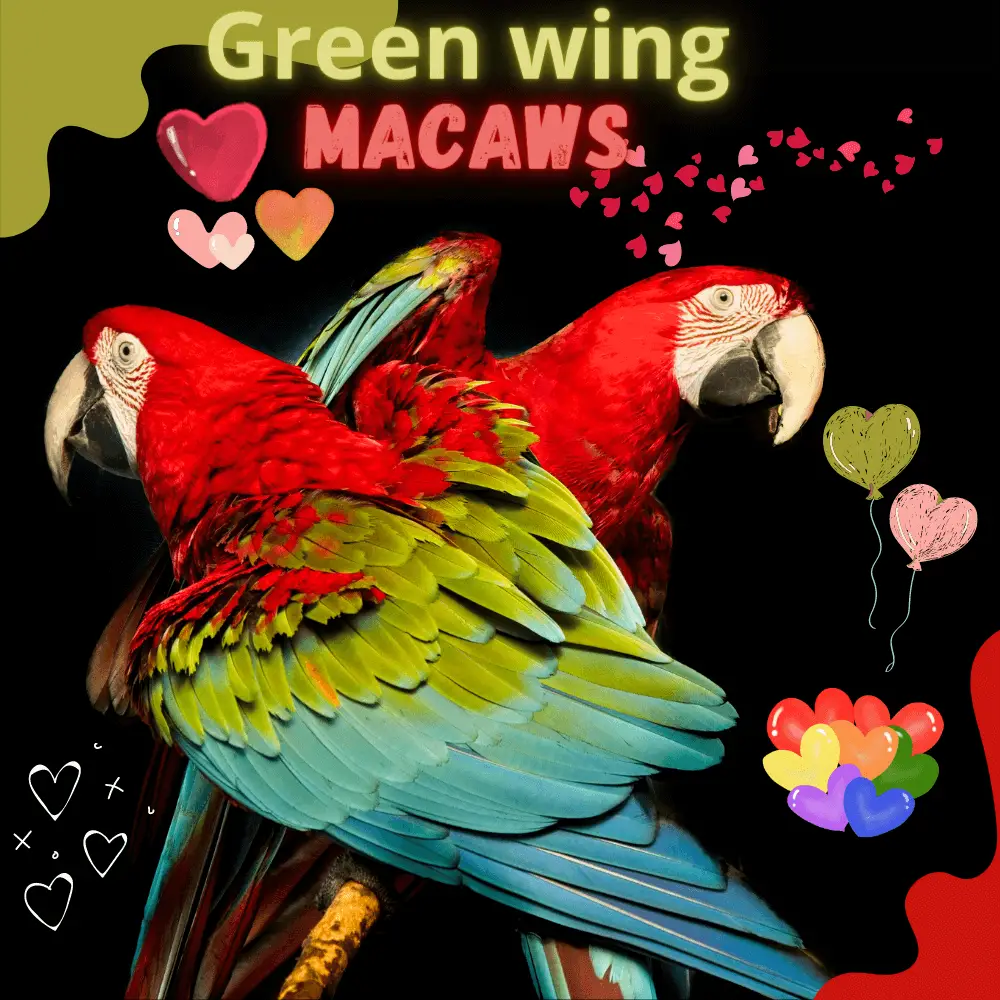Green wing macaws: As for the green parrot, the second in terms of size only, it is the grouse parrot, which is the largest parrot, and is often known as the gentle giant, due to its calmness.
Its gorgeous color and temperament make it a favorite family pet for those who have the space and time to care for such a large bird.
- Green-winged macaws also go by the name of the red-green macaw.
- The taxonomic name for the green-winged parrot is Ara chloroptera.
Green wing Macaw size
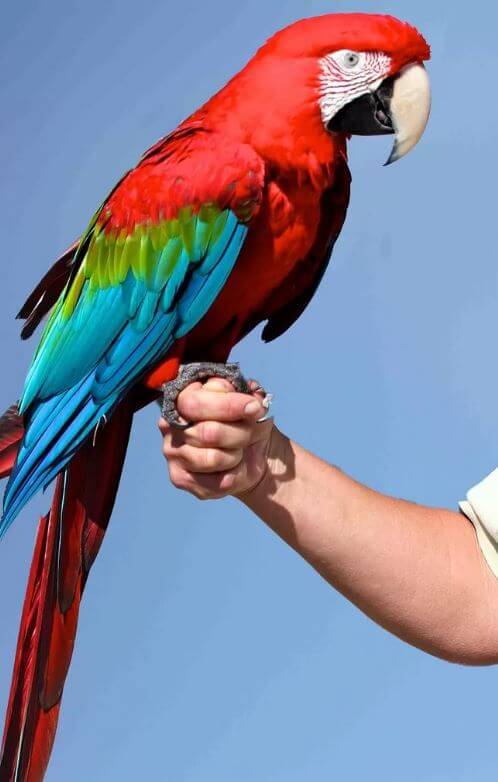
Green wing macaws are one of the largest parrot species, with adults measuring up to 40 inches from beak to tip of tail feathers, with a wingspan of up to 49 inches.
Green wing Macaw colors
The green wing macaw is one of the most well-known parrot species. These bright birds are a deep rich red on the head, shoulders, and breast, with a green band under the shoulders and flanks.
The green band transitions to a darker blue on the wings, and there is a lighter blue on the rump and on the tail covert feathers.
Long tail feathers are red, tipped with blue. The legs and feet are a deep grey, and the bill is a black horn with black lower underparts. The bird has eye spots on its face.
Males and females are indistinguishable, except that the males are slightly larger.
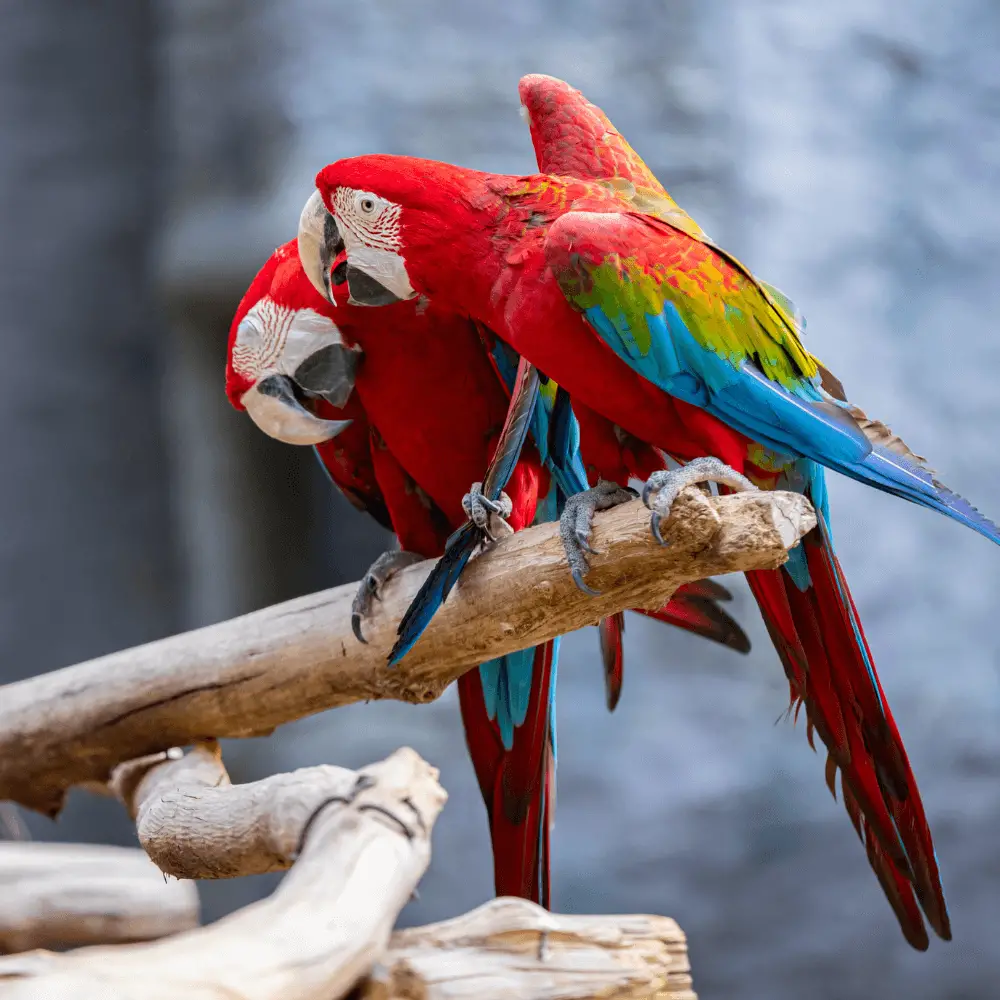
Green wing Macaw habitat
The green wing macaws, as well as other parrots, were kept in captivity in the seventeenth century, but captive breeding began in the nineteenth century, and fortunately, it was very successful. Today, it is relatively easy to find green wing macaws that were once bred in captivity.
However, like other tropical birds, this macaw has seen its natural habitat poorly depleted, many of which are still being held in the black market parrot trade. If you decide to adopt green wing macaws, be sure to deal with a reputable breeder who can check the condition of the parrot.
Green wing Macaw lifespan
On average, a well-carved green macaw pet will live for about 50 years. However, there are reports of green-winged macaws living for 80 years. Before adopting one, make sure you’re ready for the lifelong commitment or you have children who want to inherit the parrot.
Green wing Macaw behavior

Those interested in adopting green wing macaws should keep in mind that these parrots, however tame and affectionate they may be, are still parrots and will act like parrots.
They grow loud, and their shrillness makes them unsuitable companions for those who live in an apartment or other setting.
They also chew, and with incredibly strong beaks, the potential for major home damage or physical injury exists for a bird with behavioral problems.
Green wing Macaw care
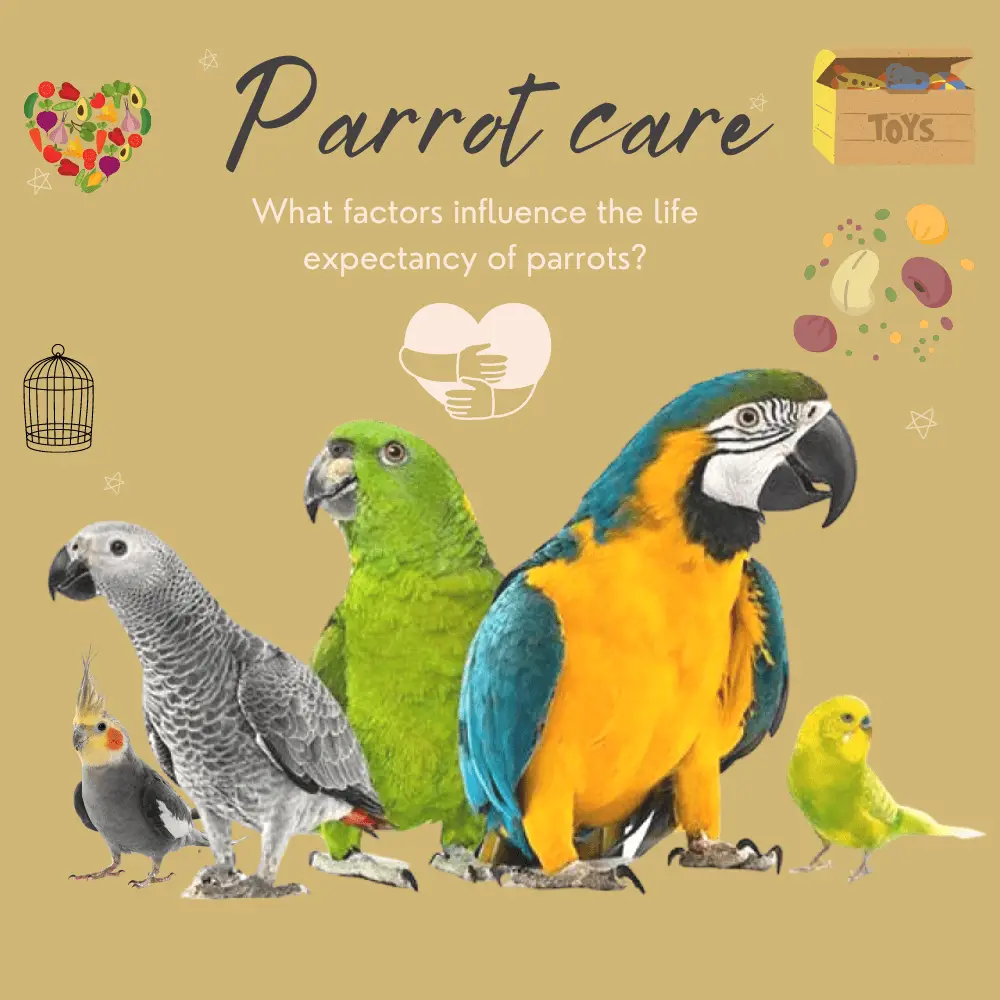
The sheer drama of owning a green wing macaw can easily blind potential owners at the expense and time required.
This bird can cost you a lot in terms of time, feed, equipment, vet bills, and possibly home repair costs. It is best to be fully prepared for this before adopting one and bringing it into your home.
In the wild, green wing parrots live in flocks of six to eight birds and are very social. Owners will need to spend plenty of time socializing with their pets. When you take a green wing Grant into your home, you effectively become a “flock” and must include it in family activities.
Green wing macaws are very responsive to training and must be given adequate attention and bonding time due to their social nature.
It is important to remember because a bored parakeet is a destructive parrot. Green wing macaws are known as soft chewers and can chew through a door frame or expensive molding at lightning speed.
Green parrot owners will have to invest in some good quality chew toys and be prepared to keep them, as these are disposable items when it comes to parrots.
Green wing Macaw cage
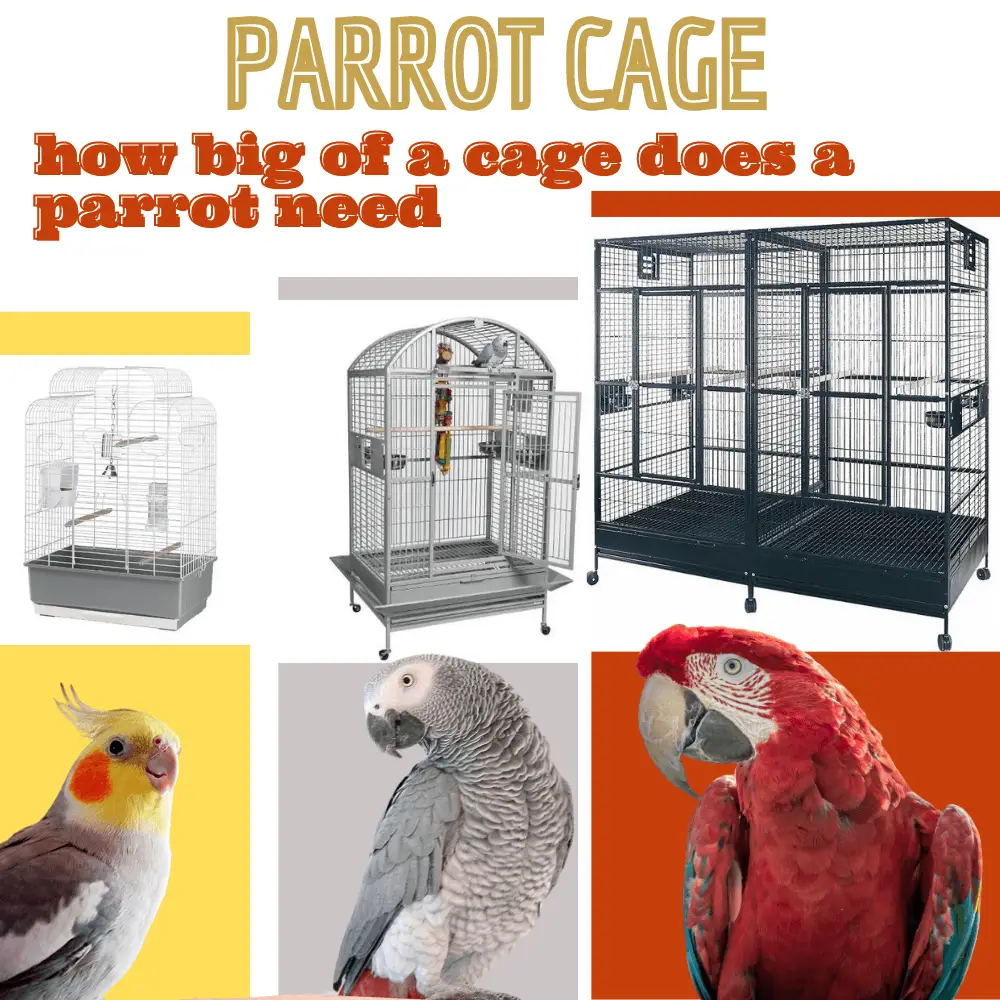
Large macaws such as the greenwing need a roomy cage — 2 1/2 feet by 3 feet minimum. The greenwing is a slightly quieter bird than some of the other large parrots, but that is a relative term – it is still a noisy species and it may be best to keep your pet in a room where disturbance to neighbors is minimal.
Install a sturdy perch in the cage, and be prepared to replace it occasionally when it becomes damaged.
It is best to install food, water, and treat dishes above the perch on the side of the cage. Branches inside the cage will offer the bird climbing exercise.
Provide a variety of toys to chew and play with. A playpen structure at the top of the cage is a good idea.
The green-winged macaw will also do well when kept in an aviary outdoors during warm weather and adapts well to an entire room designated as an indoor bird room.
Green wing macaw diet
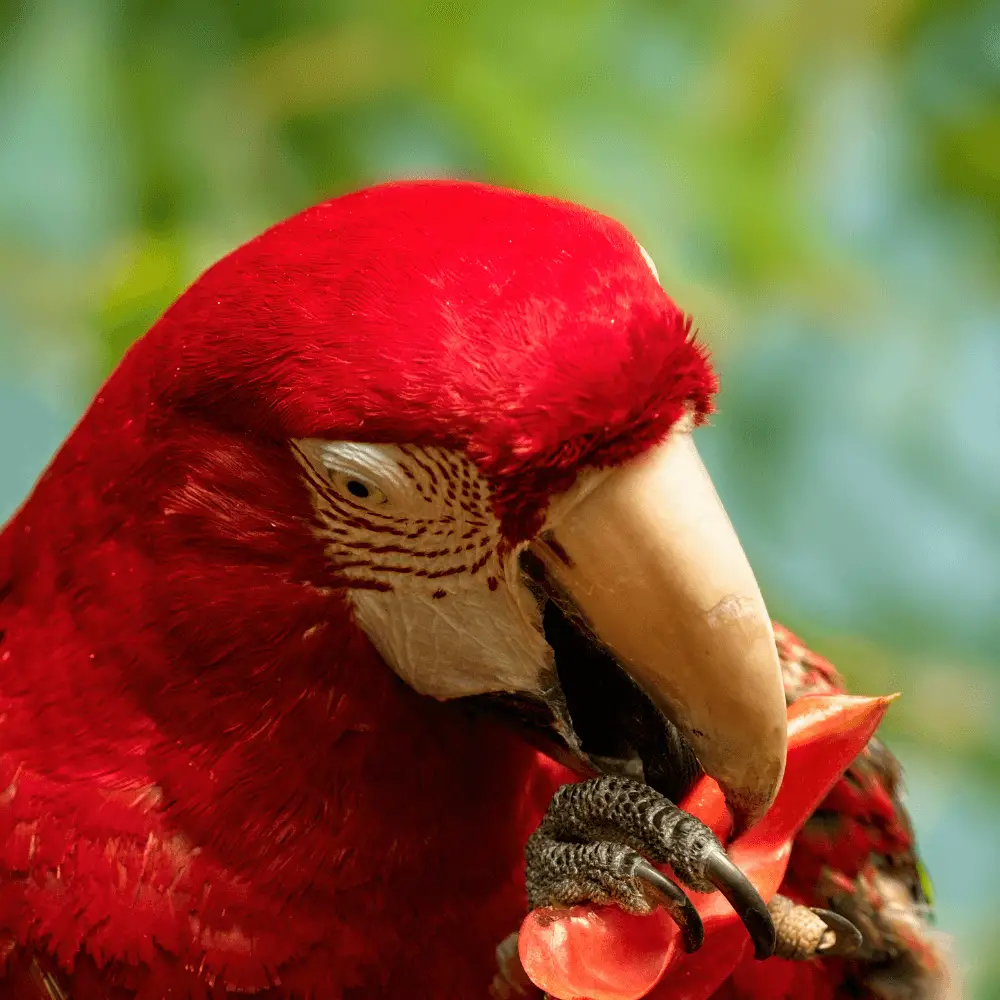
Green Macaws, like all parrots, should consume a high-quality commercial seed and pellet mix as well as daily servings of parrot fruits and vegetables. Most green wings enjoy hand-feeding at the same time as family meals.
Green wing macaws are known to eat some protein in the wild, and in captivity, they will eat parts of cooked chicken.
As with all parrots, avocados, and chocolate are toxic.
Green wing Macaw training

Although they are not as active as other large parrots, green macaws still need plenty of exercise for mental and physical stimulation, with approximately 2 to 3 hours of daily supervised out-of-cage play.
Providing a separate cage structure away from the cage will help occupy his time during these exercise periods.
Green wing Macaw health
Green wing macaws, like other parrot species, are susceptible to certain diseases, including:
- Enlarged proteinosis (also called macaw wasting disease ), is a viral disease that causes gastrointestinal problems as well as neurological symptoms. It is usually fatal, and the best preventive measures are to keep birds isolated from other birds that may be carrying the virus.
- Psittacine beak and feather disease is a disease caused by a lethal virus that kills feather and beak cells and also compromises the immune system. It is usually fatal and is best prevented by making sure your bird has been properly quarantined before you purchase it.
- Psittacosis is a bacterial disease that causes respiratory symptoms and eye drainage. Birds under stress are most susceptible to infection, and prompt antibiotic treatment can cure the disease.
Other less serious problems include allergies, and behavior problems such as feather plucking, which usually occur in bored or frustrated parrots.
SOURCE: African Grey Parrot Pet
Related article:

